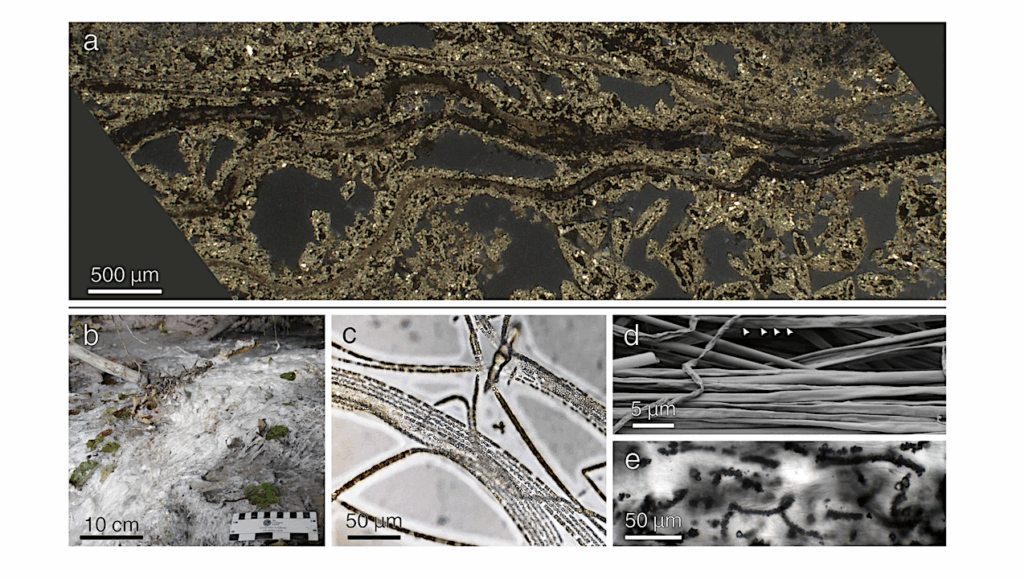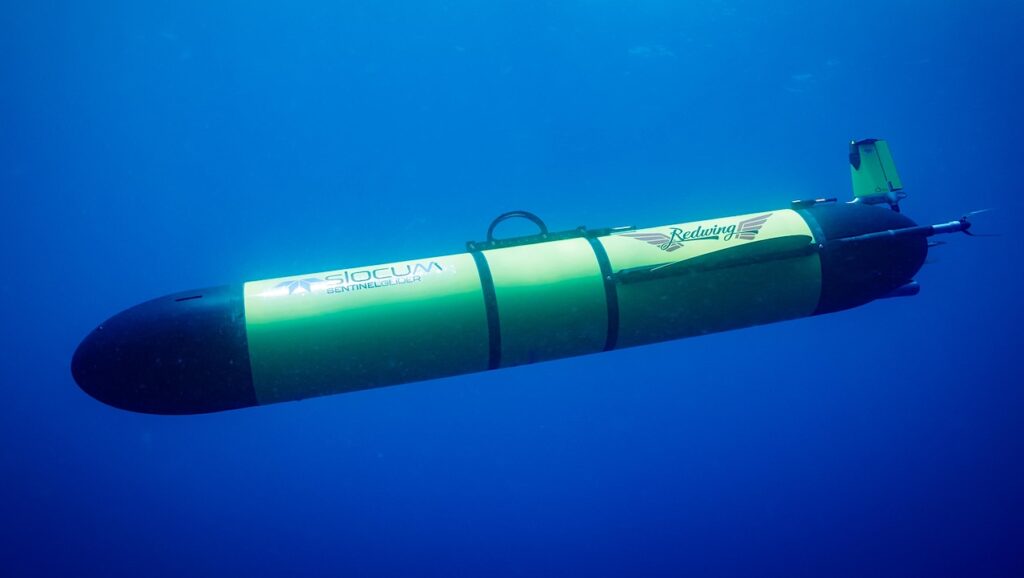Climate Change Threatens Antarctic Meteorites

Using artificial intelligence, satellite observations, and climate model projections, a team of researchers from Switzerland and Belgium calculate that for every tenth of a degree of increase in global air temperature, an average of nearly 9,000 meteorites disappear from the surface of the ice sheet. This loss has major implications, as meteorites are unique samples of extraterrestrial bodies that provide insights into the origin of life on Earth and the formation of the Moon.
Disappearing at an alarming rate
By 2050, about a quarter of the estimated of 300,000 – 800,000 meteorites in Antarctica will be lost due to glacial melt. By end of the century, researchers anticipate that number could rise approaching a loss of meteorites closer to three-quarters of the meteorites on the continent under a high-warming scenario.
Published in the journal Nature Climate Change, Harry Zekollari co-led the study while working under Professor Daniel Farinotti in the Laboratory of Hydraulics, Hydrology and Glaciology at the Department of Civil, Environmental and Geomatic Engineering at ETH Zurich. Zekollari and co-lead Veronica Tollenaar, Université Libre de Bruxelles, reveal in the study that ongoing warming results in the loss of about 5,000 meteorites a year, outpacing the collection efforts of Antarctic meteorites by a factor five.
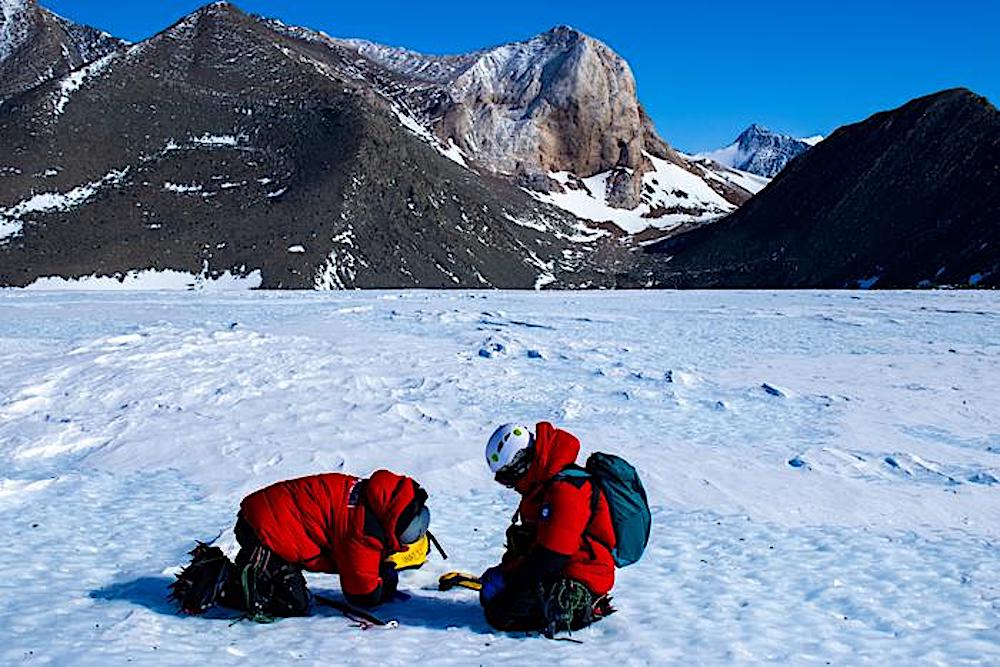
Ice sampling on a blue ice area in mountainous terrain. Photo taken during the 2023-2024 fieldwork mission of the Instituto Antártico Chileno (INACH) to Union Glacier, Ellsworth Mountains, Antarctica. Credit: Fernando Inostroza Méndez, Center for Antarctic Affairs of the Chilean Army. CREDIT Veronica Tollenaar, Université libre de Bruxelles
Meteorites – time capsules of the universe
Zekollari, now an Associate Professor of Glaciology at Vrije Universiteit Brussel, calls for a major international effort to preserve the scientific value of meteorites, “We need to accelerate and intensify efforts to recover Antarctic meteorites. The loss of Antarctic meteorites is much like the loss of data that scientists glean from ice cores collected from vanishing glaciers – once they disappear, so do some of the secrets of the universe.”
Meteorites are fragments from space that provide unique information about our solar system. Antarctica is the most prolific place to find meteorites, and to date, about 60 percent of all meteorites ever found on Earth have been collected from the surface of the Antarctic ice sheet. The flow of the ice sheet concentrates meteorites in so-called “meteorite stranding zones”, where their dark crust allows them to be easily detected. In addition to intensifying recovery operations, there is potential to increase the efficiency of meteorite recovery missions in the short term. This potential relies mainly on data-driven analysis to identify unexplored meteorite stranding zones and mapping areas exposing blue ice where meteorites are often found.
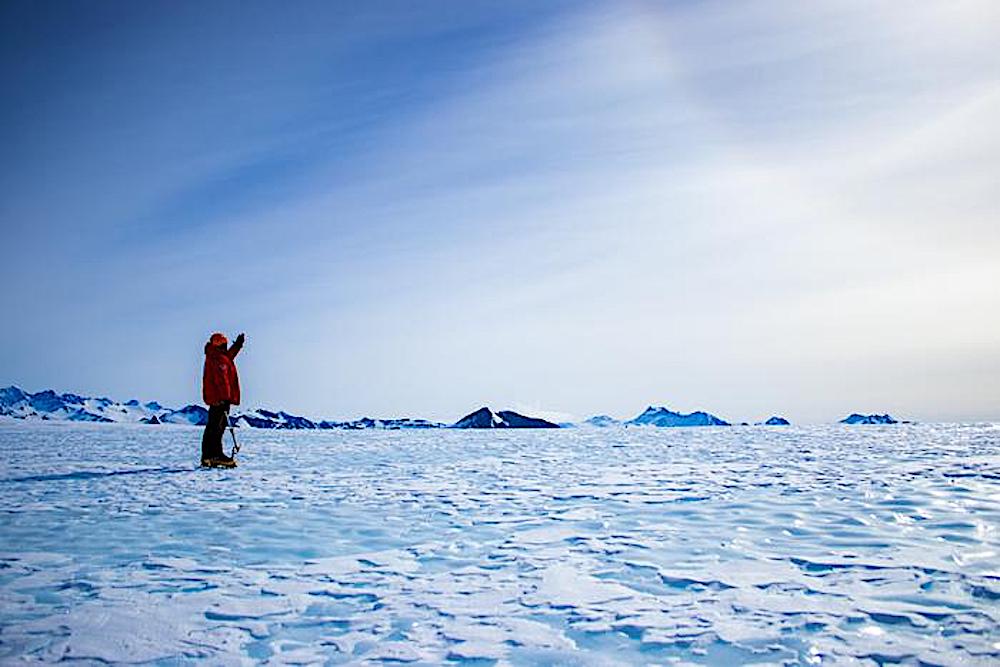
Field guide in a blue ice area during a mission to take ice samples. Photo taken during the 2023-2024 fieldwork mission of the Instituto Antártico Chileno (INACH) to Union Glacier, Ellsworth Mountains, Antarctica. CREDIT Veronica Tollenaar, Université libre de Bruxelles
Extraterrestrial heritage slipping away
Due to their dark colour, meteorites preferentially heat up with respect to the surrounding ice. As this heat transfers from the meteorites to the ice, it can warm up the ice, and eventually cause the ice to locally melt, leading to a sinking of meteorites underneath the surface of the ice sheet. Once the meteorites enter the ice sheet, even at shallow depths, they cannot be detected anymore, and they are thus lost for science.
As atmospheric temperatures increase, so does the surface temperature of the ice, intensifying the loss. “Even when temperatures of the ice are well below zero, the dark meteorites warm-up so much in the sun that they can melt the ice directly beneath the meteorite. Through this process, the warm meteorite creates a local depression in the ice and over time fully disappears under the surface,” says Tollenaar.
Scientists conclude that in the long-term, the only way to preserve most of the remaining unrecovered Antarctic meteorites is to rapidly reduce greenhouse gas emissions.
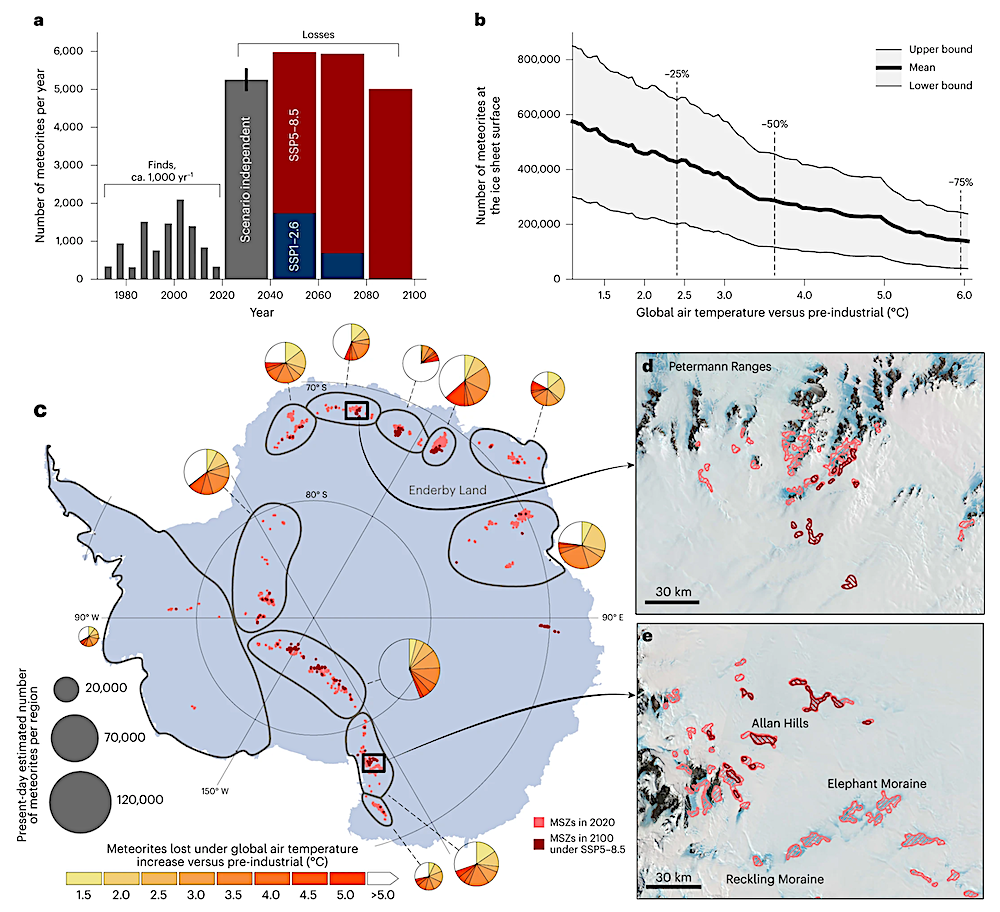
a, Antarctic meteorite finds up to 2020 (that is, including January or February 2019, not including 2020) documented in the Meteoritical Bulletin17 (averaged over 5 yr intervals) and predicted future loss rates (averaged over 20 yr intervals) for a low-emissions scenario (Shared Socio-economic Pathway (SSP)1-2.6) and a high-emissions scenario (SSP5-8.5) (Supplementary Fig. 1). Estimates for the two emissions scenarios start to deviate from 2052; therefore loss rates for 2020–2040 are averaged for the two scenarios with the error bar representing the lower and upper estimates. b, The projected number of meteorites remaining at the ice sheet surface in relation to global air temperature increase with respect to pre-industrial levels (1850–1900; Supplementary Fig. 3). The graph displays the average estimate (bold line) and both the lower and upper bounds (grey shading; Methods), and indicates under which temperature increase 25%, 50% and 75% of the meteorites are lost. c, Continent-wide estimate of meteorite stranding zones (MSZs) in 2020 and in 2100 under SSP5-8.5 (both exaggerated with buffers of 10 km for visual clarity). The pie charts show the number of meteorites lost under global air temperature increases relative to pre-industrial values (colour scale) for the regions outlined in grey. In other parts of the Antarctic continent31,32 (that is, in regions that are not within grey boundaries), the total estimated numbers of meteorites are negligible (~0.5% of all meteorites in 2020). d, Unexplored meteorite stranding zones in the Petermann ranges in 2020 (pink) and 2100 (under SSP5-8.5, red). Potential new areas that appear are mostly snow covered (Methods). Background data are false-colour Landsat satellite images33. e, Identified meteorite stranding zones in the Allan Hills and Elephant Moraine area. The Allan Hills meteorite stranding zone (~1,800 meteorite finds so far) is projected to persist under a warming climate, while those at Elephant Moraine (~2,500 meteorite finds so far) and Reckling Moraine (~150 meteorite finds so far) are projected to disappear before 2100 under SSP5-8.5. Credit: d,e, Landsat Image Mosaic of Antarctica (LIMA) project.
Antarctic meteorite archives threatened by climate warming, Nature (open access)
Astrobiology, Astrochemistry,





